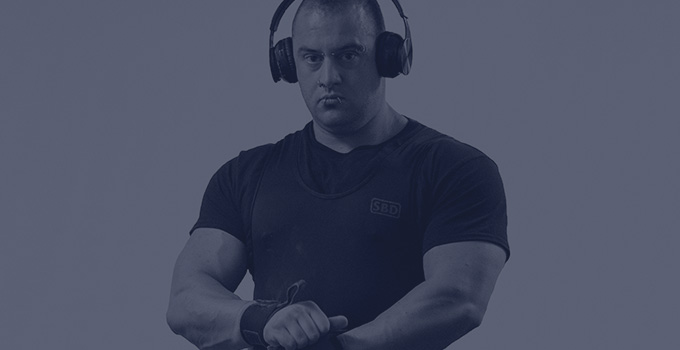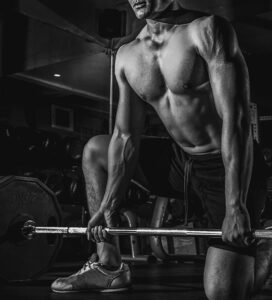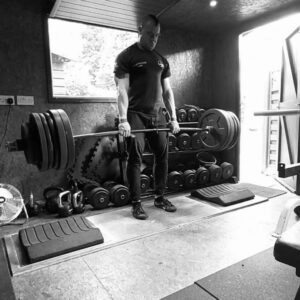Knowledge
Blitz-Cycling: Periodized Specialisation Training for Advanced Lifters Part I
Articles, Fat loss, Muscle gain, Strength and performance, Training

When you’re a beginner you really don’t know how good you’ve got it. You can do just about anything and make decent progress. Yes your trainability is low (your tolerance for training stress) but the dosage you need to progress is minimal. It doesn’t matter whether it’s Starting Strength, daily undulating periodization or Zumba; you make gains regardless. You don’t need any special methods, intensity techniques or ancient Voodoo magic.
Then you enter the “Intermediate Zone”. The beginner gains are long gone but you can still make significant or noticeable progress across the course of a well-planned training cycle (8+ weeks). The required training stress to stimulate progress is higher, hence why you now need to periodize your training to a degree. BUT your trainability is now higher. You can tolerate more training stress as your body is more acclimated to the stimulus and (hopefully) your technique and motor skills are better (meaning the lifts impose less stress on your systems). So overall, it kind of evens out.
Some people will never progress past this stage either because they don’t want to (“That is why no one will remember your name”) or because life circumstances (limited training time etc.) inhibit them from reaching a higher level of performance.
Why it sucks being an advanced lifter
Now we enter the 9th circle…
Only the 5% of gym-goers who are masochistic enough, or simply have nothing better to do, reach the Advanced Zone. This is a dark, desolate place devoid of all of hope; but we’re jacked so it’s OK (cries solitary tear).
Once you become an advanced lifter continuing to progress becomes extremely difficult. This is mainly down to two, inter-linked reasons:
1 – Your training sensitivity (how readily your body reacts and adapts to the stimulus of training) is low because you have been training at a high level for a long period of time to get to the level that you have
2 – Your body has a limited capacity to recover from training, which doesn’t keep increasing in line with your physical capabilities (unless you start taking PEDs). Even though your motor skills and recovery capabilities SHOULD be better than when you were an intermediate, it pales in comparison to how much lower your trainability now is.
Think of it like this:
We’re in a situation in which we need to progressively provide a bigger and bigger stimulus to the body to force an adaptation. BUT we can’t do that as we don’t have an ever increasing ability to recover from that workload.
In a perfect world we would increase our recovery ability by “freeing up” resources through means such as: working less, sleeping more, less general activity and just reducing any type of stress as much as possible. But unfortunately getting rid of one of the kids, quitting your job or finally icing the mother-in-law isn’t a realistic option for most of us (if it is then all the power to you).
This makes it very difficult to make progress. At least on everything at once…
Enter Stage Right… Specialization Training
If we can’t throw enough workload at our whole body, or all our lifts, at once to recover and improve then the solution is simple…. We don’t.
Instead we choose one lift (or one or two body parts) and focus a huge amount of our efforts on improving that.
The key to this system is that the amount of workload that it takes to MAINTAIN performance, even at an advanced level, is just a fraction of the workload it takes to improve performance (roughly 25-33% of what it takes to progress).
Just as an example, let’s say my 3 focus lifts are: Back Squat, Bench Press and Deadlift (yes, I’m a powerlifter sue me)
It may take 12-15 work sets per week on each of those lifts to continue to force some slow progress in those lifts over several months. Whereas, our performance on those lifts could be maintained by 3-5 work sets per week (1/4 to 1/3 of the training stress).
So if you want to try and progress all 3 lifts at once our weekly workload would look like:
Non-Specialised Weekly Training Breakdown
Back Squat – 12 work sets
Bench Press – 12 work sets
Deadlift – 12 work sets
Total Volume – 36 work sets
36 work sets per week on big compounds lifts that are at an elite level already may well be more training stress than our advanced trainee can recover from. Our lifter may only be able to recover from, say, 25 work sets per week, which we are now WAY over. This will likely lead us straight towards stagnation, training burnout and possibly death (which is why de-loads can be important for advanced lifters but not so much for beginners).
Instead we decide to listen to that super smart coach on Thibarmy.com and choose to focus on our Back Squat for 4 weeks and put Bench Press and Deadlift on maintenance mode. In this scenario lets see how much volume we can dedicate to Back Squat without exceeding our 25 work sets weekly limit
Specialized Weekly Training Breakdown
Weekly Recoverable Volume – 25 sets
Bench Press Maintenance Volume – 3-5 sets
Deadlift Maintenance Volume – 3-5 sets
Back Squat Specialization Volume – 15-19 sets
So in this example we can dedicate 25-60% MORE workload to our Back Squat to improve it’s performance while providing just enough workload for Bench and Deadlift to maintain their performance level.
All of this while staying within our weekly workload limit of 25 sets. As an added bonus, the lifts/muscle groups that are put on maintenance mode will in fact then be MORE sensitive/responsive to the training stimulus once it is their turn to be focused on since they have received limited stimulation for a while. Meaning when we do get around to focusing on them they will in fact progress FASTER.
Sound too good to be true!?
Well, unlike that new supplement telling you that you can add 2” “down there”, this is the real deal.
What I’ve outlined above (in the simplest way possible) is why specialization training is the best option for advanced lifters to keep progressing.

Why Specialization Training is awesome
Fast rate of progress – specialization training allows you to give enough stimulus to one area to force it to progress, often at a very respectable rate, while maintaining your other areas. This can be incredibly motivating for an advanced athlete who has often spent extended periods of time making little to no progress, or even regressing at times.
Singleness of purpose – a lot of athletes will be motivated by the idea of doing literally everything they can to improve one specific facet of their performance. They enjoy the feeling of being “all in” on something. This can be especially true for people who are “extreme” in nature and don’t like to do things by halves (which high performing athletes often are)
Frequency of practice – when it comes to motor learning, frequency is king. If you’re aiming at improving a specific lift or skill then a specialization block allows you to practice it more frequently and with higher volume. This can speed up the process of motor learning and improve technique in the long term.
Faster More Efficient Workouts – when focusing primarily on a single capacity or movement pattern you will find that you need less time to “grease the groove” and warm up. This along with the fact that most of your sessions will revolve around a single lift/skill can mean your sessions become very productive and time efficient
Why Specialization Training MAY be slightly less awesome than I make it out to be (although it’s definitely not)
Loss of skill on other non-focus lifts – while it’s true that you can maintain your ability on the non-focus lifts/capacities while you specialize. Your performance may drop slightly purely due to the fact you are performing them less frequently (although this often isn’t the case). This is purely down to skill rather than physical ability and is nothing that won’t be rectified within a few weeks of more frequent practice. Even then, some will struggle with the idea of potentially not performing as well in some areas temporarily
Singleness of purpose – yes, one of its strengths can also be one of it’s weaknesses. People who thrive on variety and get bored easily may well feel un-stimulated by primarily focusing on one thing for several weeks, even if methods etc. are varied throughout.
Difficult to peak – if you are focusing primarily on one facet of your performance at a time then you won’t be truly “peaked” at any one point. This would require changing to a more balanced approach temporarily to peak for an event or competition.
Requires good technique and discipline – pushing one lift or capacity hard so frequently for several weeks requires you to have good technique in the lifts being used. Faulty technique will likely lead to over-use issues and unnecessary strain on joints, ligaments and tendons as well as leaving you more open to injury. It’s also important to have the discipline to be able to know on what days to push yourself and when to ease off a little so you don’t burn out
I know what you’re all thinking “I’m sold, tell me how to implement this super awesome training strategy so I can become a god amongst men”. That is precisely what I’m going to do…. in Part II of this article. I’ll show you the different structures of Blitz/Specialization training you can use as well as give you my secret morning skin care routine that’s guaranteed to get you looking fabulous
Until next time…


